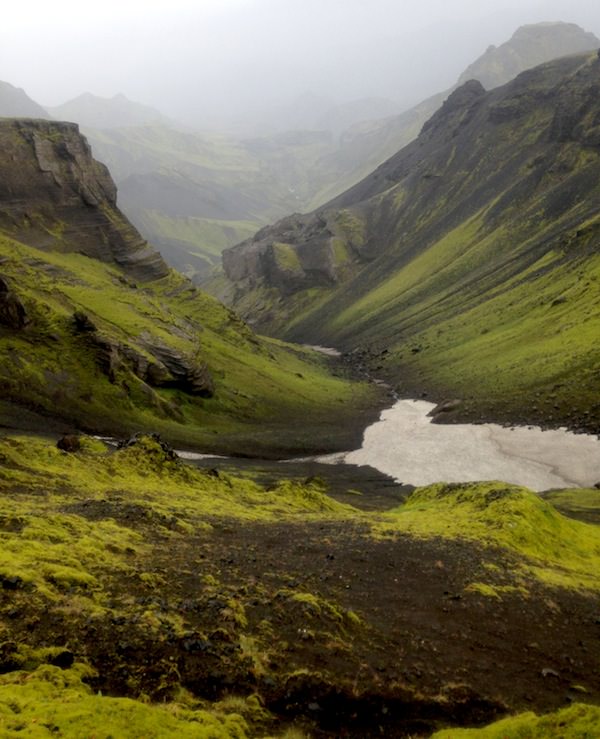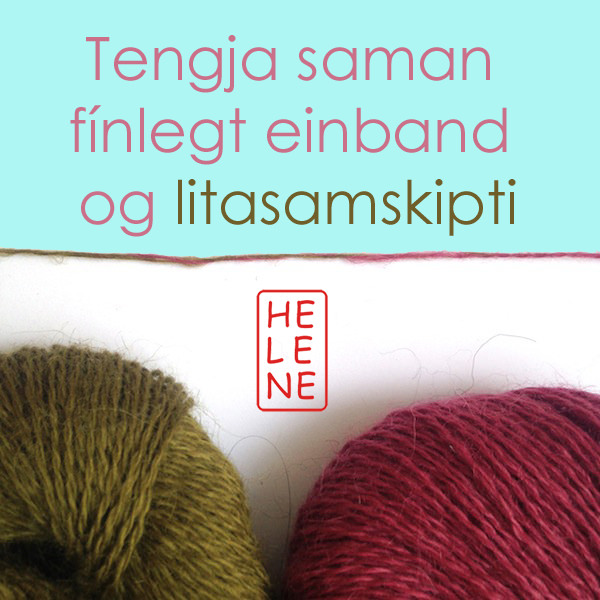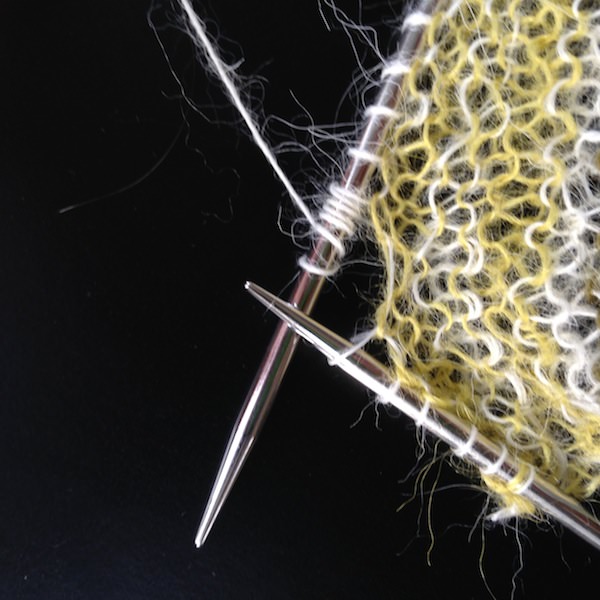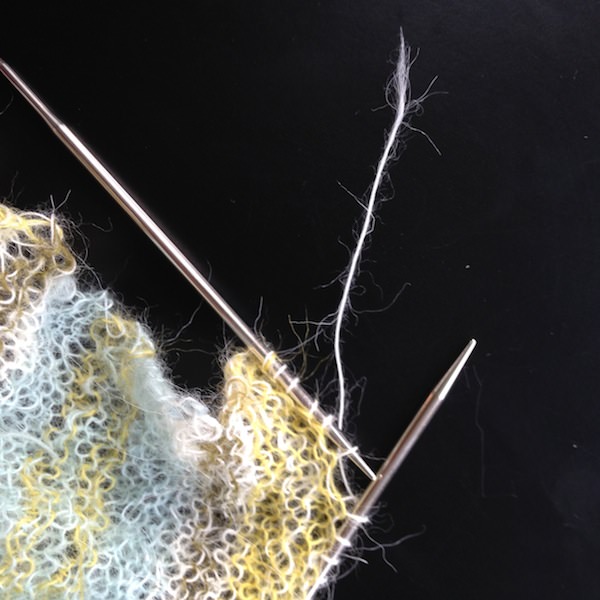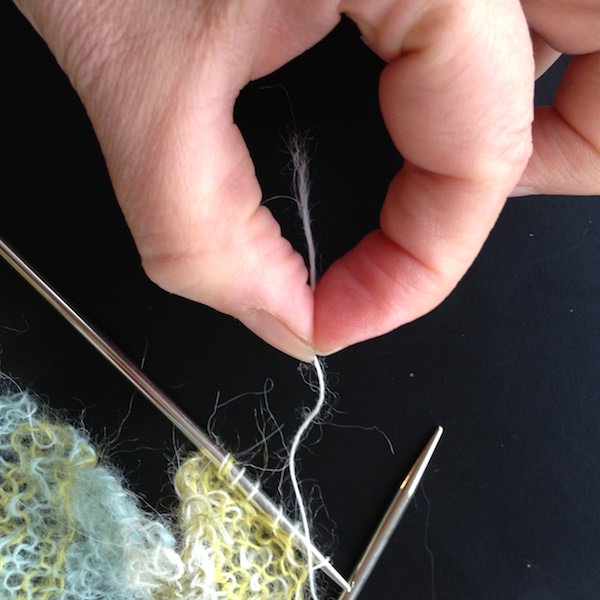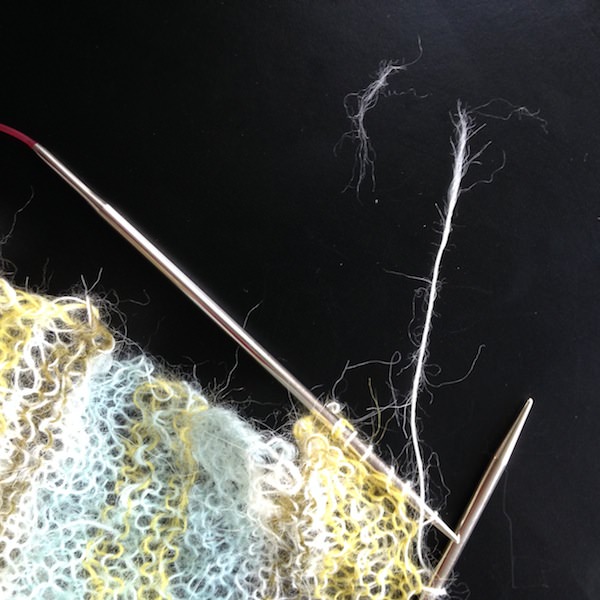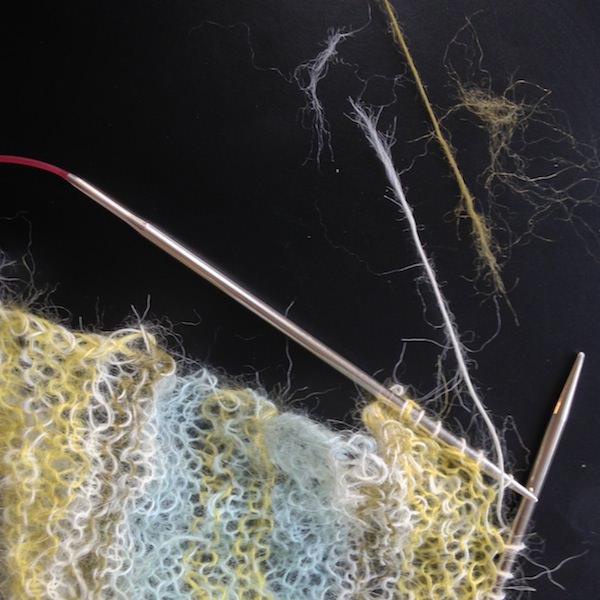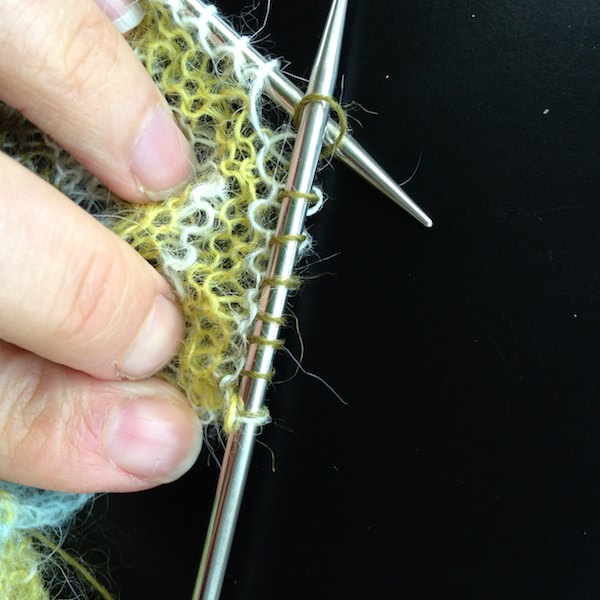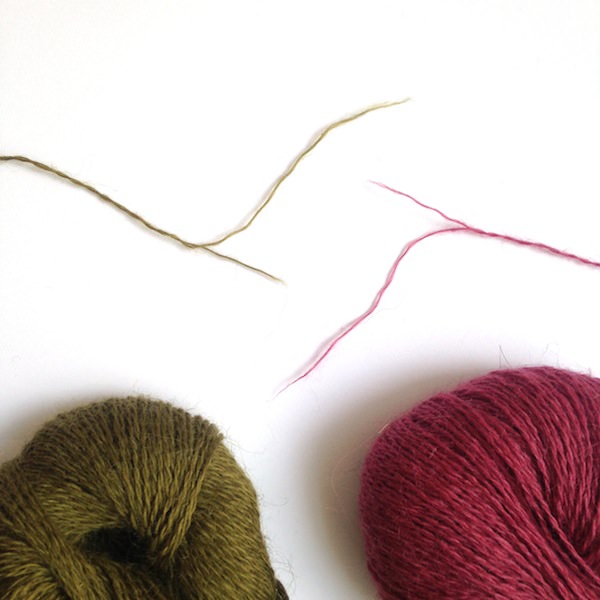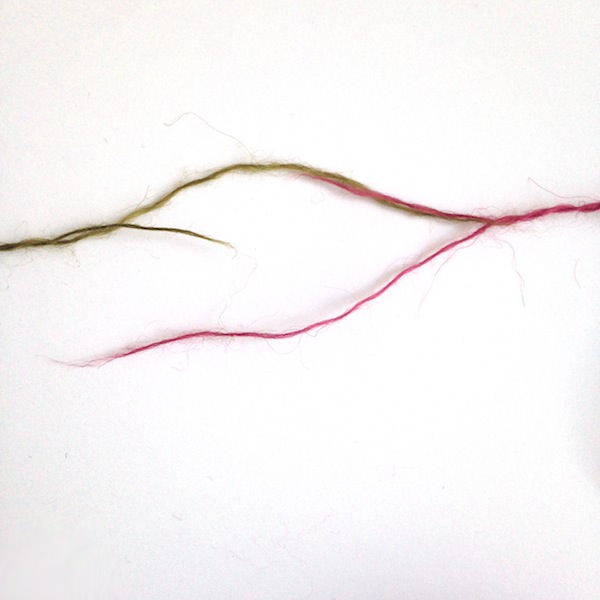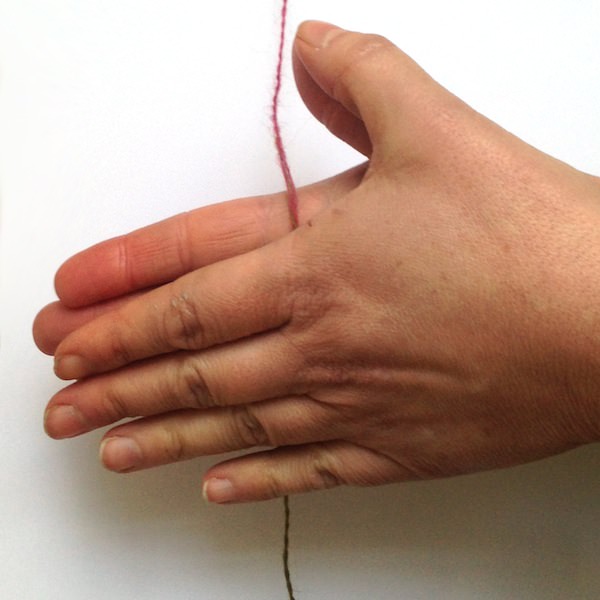Prjónatrík
Tengja saman fínlegu bönd og litasamskipti
Most knitters prefer to splice or join yarn without knots and without leaving ends that have to be woven in to the final item. This tutorial shows you how spit-splice lace yarn, both single and double ply. It also shows you how to change colors between rows without having numerous ends to darn in or adding any extra bulk. Spit splicing only works for high content wool yarns, preferably at least 50% wool and does not work for superwash wool. The spit-splice essentially felts the fibers together to create a continuous, strong yarn.
1. Spit-splicing single ply lace and changing colors: demonstrated here with Love Story in Natural white and Moss green.
Stop about 6 sts before the end of the row.
Wrap the yarn (not too loosely, not too tight) 6 times around the needle: this will give you the approximate length to knit 6 sts.
Break yarn: don’t use scissors, you want the end to be frayed and pointed like a pencil.
Use your fingernails to further fray the yarn into separate fibers.
The fraying will avoid any extra bulk when joining the two yarns together.
Do the same with the end of the yarn to join and overlap them on top of each other, meeting in the middle (a few centimeters/ an inch).
Rub the ends vigorously between your palms with a bit of spit (what I do is to leak my hand!). You can use water if you wish, but spit is handy and its pH activates the felting process).
The ends are joined and the colors are blurred together over a few cm (about an inch).
Continue knitting: the color change occurs gradually and is barely noticeable.
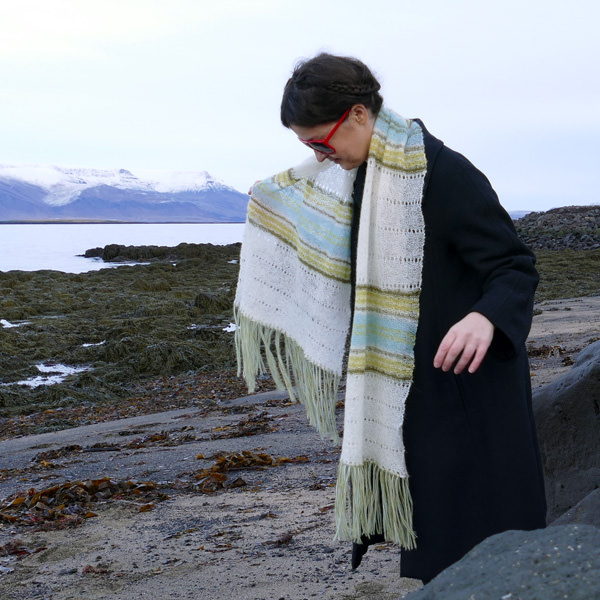
I used this method to work the sets of stripes of the Hila long shawl (Sneakpeak! Soon to be published!). This saves having so many ends to darn in!
2. When working with a plied lace yarn, the color change occurs in the same manner but joining the ends is slightly different: here demonstrated on Gilitrutt (Moss green and Old pink).
Start to split the ends in two. Make one end shorter than the other. Again don’t use scissors: you want pointed ends like pencils.
Join one short end with one long end by twisting them between your fingers with a bit of spit. At that point, the ends don’t really need to stick that well to each other.
Do the same with the other ends.
Now, rub the ends vigorously between your palms with a bit of spit.
The two ends are joined, there is no extra bulk.
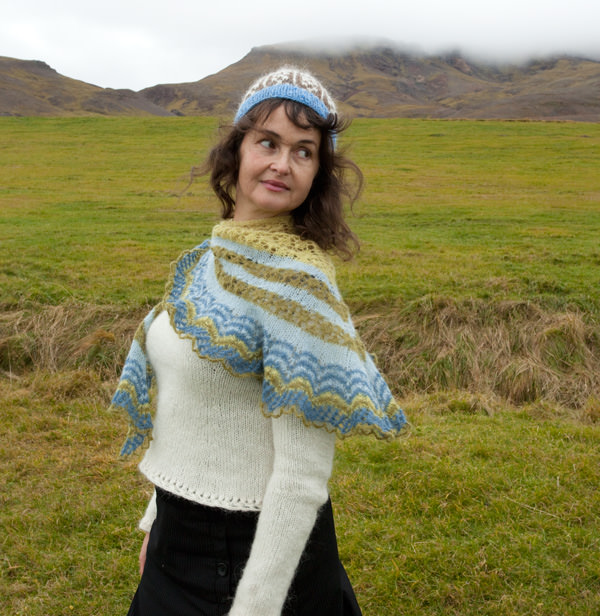
This spit-splicing method is how I worked the color changes in my Icelandic Spring shawl and really any color change using my Gilitrutt yarn. When the knitting is over, there are only 2 ends to darn, the cast on one and the bind off one! Yay for “lazy darners”!

